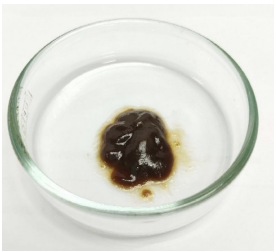|
Basal Stem Rot (BSR), a disease caused by Ganoderma boninense (G. boninense), has posed a significant concern for the oil palm industry, particularly in Southeast Asia, as it has the potential to cause substantial economic losses. The breeding programme is currently searching for G. boninense-resistant planting materials, which has necessitated intense manual screening in the nursery to track the progression of disease development in response to different treatments. The combination of hyperspectral image and machine learning approaches has a high detection potential for BSR. However, manual feature selection is still required to construct a detection model. Therefore, the objective of this study is to establish an automatic BSR detection at the seedling stage using a pre-trained deep learning model and hyperspectral images. The aerial view image of an oil palm seedling is divided into three regions in order to determine if there is any substantial spectral change across leaf positions. To investigate if the background images affect the performance of the detection, segmented images of the used by Ganoderma boninense (G. boninense), has posed a significant concern for the oil palm industry, particularly in Southeast Asia, as it has the potential to cause substantial economic losses. The breeding programme is currently searching for G. boninense-resistant planting materials, which has necessitated intense manual screening in the nursery to track the progression of disease development in response to different treatments. The combination of hyperspectral image and machine learning approaches has a high detection potential for BSR. However, manual feature selection is still required to construct a detection model. Therefore, the objective of this study is to establish an automatic BSR detection at the seedling stage using a pre-trained deep learning model and hyperspectral images. The aerial view image of an oil palm seedling is divided into three regions in order to determine if there is any substantial spectral change across leaf positions.
|
|

The three regions of interest: A: Inner region—2cm from the center of the seedling to 5cm square. B: Middle region—5cm from the center of the seedling to 8cm square. C: Outer region—8cm from center of the seedling to 11cm square.
|
To investigate if the background images affect the performance of the detection, segmented images of the plant seedling have been automatically generated using a Mask Region-based Convolutional Neural Network (RCNN). Consequently, three models are utilized to detect BSR: a convolutional neural network that is 16 layers deep (VGG16) model trained on a segmented image; and VGG16 and Mask RCNN models both trained on the original images. The results indicate that the VGG16 model trained with the original images at 938 nm wavelength performed the best in terms of accuracy (91.93%), precision (94.32%), recall (89.26%), and F1 score (91.72%). This method revealed that users may detect BSR automatically without having to manually extract image attributes before detection.
|
|
Yong LZ, Khairunniza-Bejo S, Jahari M, Muharam FM. Automatic Disease Detection of Basal Stem Rot Using Deep Learning and Hyperspectral Imaging. Agriculture. 2023; 13(1):69.
Full article: https://doi.org/10.3390/agriculture13010069
|
Tarikh Input: 24/02/2023 | Kemaskini: 31/10/2023 | ainzubaidah
PERKONGSIAN MEDIA



























